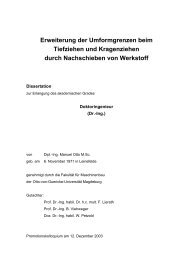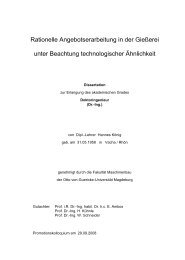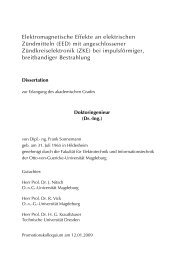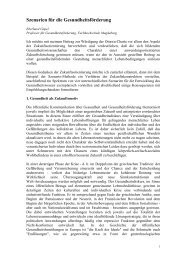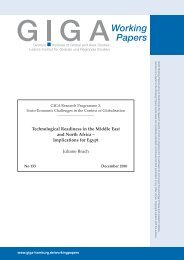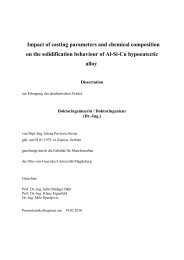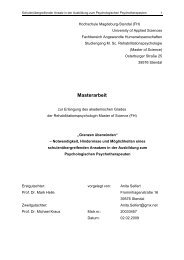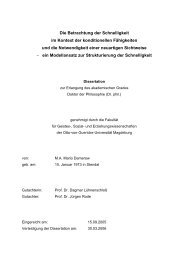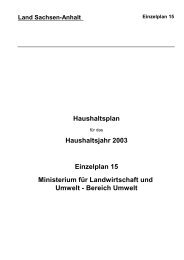Chapter 1
Chapter 1
Chapter 1
Create successful ePaper yourself
Turn your PDF publications into a flip-book with our unique Google optimized e-Paper software.
try an opportunity to accelerate a series of reforms which Government approvals continued to play an important role.<br />
should contribute to the improved competitiveness and The 1987 law offered generous incentives on a sectoral<br />
dynamism of the Tunisian economy. An Institutional basis, and two sectors also benefited from preferential inter-<br />
Development Fund (IDF) grant study constructed a gen- est rates: tourism and agriculture. The incentives were large<br />
eral equilibrium model to estimate the expected impact of (exceeding 1 percent of GDP), they created distortions in<br />
the agreement on the Tunisian economy. the allocation of investment resources, and-in the case of<br />
The total long-term gain in value added is substantial, as agriculture and tourism-encouraged debt as opposed to<br />
resources are reallocated to more productive activities and equity financing. Figure 3.2 compares private investment<br />
as Tunisia receives EU assistance to upgrade standards and patterns in the early 1980s and 1990s. Except for transport<br />
services. The unquantifiable gains in terms of providing services, which grew from a low base in the early 1980s, the<br />
increased security and momentum to strengthen the imple- pattern has not changed significantly. The decline in manumentation<br />
of Tunisia's reform agenda are equally impor- facturing investment may be due to high positive real intertant.<br />
The EU's policy support and technical assistance est rates, incentives that encouraged the misallocation of<br />
should speed up the transfer of technology and enhance resources, and uncertainties stemming from the preparainvestment<br />
opportunities that will help Tunisian enterprises tion of reforms in investment regulations and incentives.<br />
compete more effectively in international markets. In December 1993 Parliament passed the Unified<br />
Preferential and guaranteed access to the EU market, at Investment Code which replaced sectoral investment incenleast<br />
for the next ten years,' should enable Tunisia to tives with common, horizontal incentives: promotion of<br />
increase its exports and attract foreign investment. For the exports; regional development; technological upgrading;<br />
EU, the cost of promoting a closer trade and investment protection of the environment; and enlargement of the<br />
relationship with Tunisia would be modest-the total value entrepreneurship base (les jeunes entrepreneurs). The<br />
of Tunisia's non-oil merchandise exports represents less 1993/94 law provides that no approvals are necessary for<br />
than 2 percent of the EU's annual outlays for agricultural investments seeking only the common incentives, it reduces<br />
subsidies alone. The expected benefits to the EU include incentive distortions (preferential credit for tourism has<br />
not only enhanced political and social stability in the region, been replaced by grants), and it strengthens the investment<br />
but also an opportunity to integrate EU manufacturers with liberalization commitment begun in 1987. However, prior<br />
a lower cost producer, and thereby improve the EU's com- government authorization is still required for numerous<br />
petitiveness. The FTA with the EU is a major step, but in domestic activities, particularly in the services sector: fishorder<br />
to succeed, the agreement needs to show rapid ing; tourism; handicrafts; transportation; telecommunicaprogress<br />
in removing all trade barriers, ensuring access to tions; education; vocational training; cultural activities;<br />
the EU market for all Tunisian goods and services, and in health and real estate development. Investments in other<br />
integrating the production and investment patterns of the FIGURE 3.2<br />
two parties. limisia: Private Investment<br />
(Pern composition)<br />
Domestic investment liberalization 45<br />
40<br />
The ratio of private investment to GDP dropped sharply 35<br />
between 1982-87, and then began increasing after 1987 30<br />
(surpassing the level of public enterprise investment), but 25<br />
even by 1992/93, it had still not reached its 1982 level (fig- 20<br />
ure 2.1). In 1987 a manufacturing investment law was intro- IS<br />
duced that abolished capacity licensing and removed prior I *<br />
5<br />
government investment authorization for all projects not 0 L<br />
requesting investment incentives. This was an important Agricre Mancturing Tourisrn Housing Other servces<br />
step toward investment liberalization, but since most pri- * 1983O85 0en 1990 93<br />
vate investors wanted fiscal and financial incentives, Soure: Mnistry oE Economnc Development INS and World Bank estimates.<br />
32 TUNISiA'S GLoBAL INTEGRATION AND SUSTAINABLE DEVELOPMENrl STRATEGIC CHOICES FOR THE 21ST CENTURY




